Bettas are not always the most sociable of fish! In fact, if you want to keep your betta happy and healthy, it’s important to choose the right tank mates carefully. We’ve created this guide for bettas’ top 15 tank mates. So if you’re looking for companions for your beloved betta, read on!
- Bettas' Top 15 Tank Mates
- Compatibility Of Bettas With Other Fish
- Size Considerations
- Different Types Of Tank Mates For Bettas
- Choosing Complementary Colours
- Creating A Balanced Ecosystem
- Bottom Dwellers For Your Betta Tank
- Recommended Species For A Community Tank
- Avoid Aggressive Fish Species
- Proper Acclimation Process
- Monitoring The Health Of Tank Mates
- Frequently Asked Questions
- Conclusion
Bettas’ Top 15 Tank Mates
The first thing to consider when picking your betta’s tank mates is their size. Bettas can be territorial and aggressive towards larger fish, so it’s best to stick with smaller species that won’t intimidate them. This doesn’t mean you have to limit yourself, though.
Here is a list of the top 10 tank mates for Bettas:
- Corydoras Catfish – these small, peaceful bottom dwellers are a great choice for Bettas. They are social and thrive in groups of six or more.
- Neon Tetras – these colorful fish are a popular choice for community tanks and make great tank mates for Bettas.
- Harlequin Rasboras – these small, peaceful fish are easy to care for and make great companions for Bettas.
- Kuhli Loaches – these bottom-dwelling fish are social and prefer to live in groups. They are also peaceful and won’t bother your Betta.
- Cherry Shrimp – these tiny creatures are a great addition to a Betta tank as they help keep the tank clean by eating algae and leftover food.
- Snails – small snails like Nerite or Mystery snails can be great tank mates for Bettas. They also help keep the tank clean by eating algae.
- Guppies – these small, colorful fish are compatible with Bettas and add a nice variety of colors to the tank.
- Platy Fish – these hardy fish are easy to care for and come in various colors. They are peaceful and make great tank mates for Bettas.
- Zebra Danios – these active, schooling fish are compatible with Bettas and add lively energy to the tank.
- Swordtails – these colorful fish are easy to care for and make great companions for Bettas.
- Otocinclus Catfish – these tiny catfish are great tank mates for Bettas as they are peaceful and help keep the tank clean by eating algae.
- African Dwarf Frogs – these small, aquatic frogs are peaceful and can be great tank mates for Bettas.
- Endler’s Livebearers – these small, peaceful fish are easy to care for and come in various colors.
- Pygmy Corydoras – these small, peaceful catfish are social and prefer to live in groups of six or more.
- Celestial Pearl Danios – these small, peaceful fish are compatible with Bettas and have beautiful, shimmering colors.
Remember to always monitor the behavior of your Bettas and their tank mates to ensure they are getting along well and not exhibiting aggressive behaviors toward one another.
This is not a complete list by any means, and not all Betta will react the same. In the rest of this article, we will discuss the various point to consider when you are looking for a suitable tank mate.
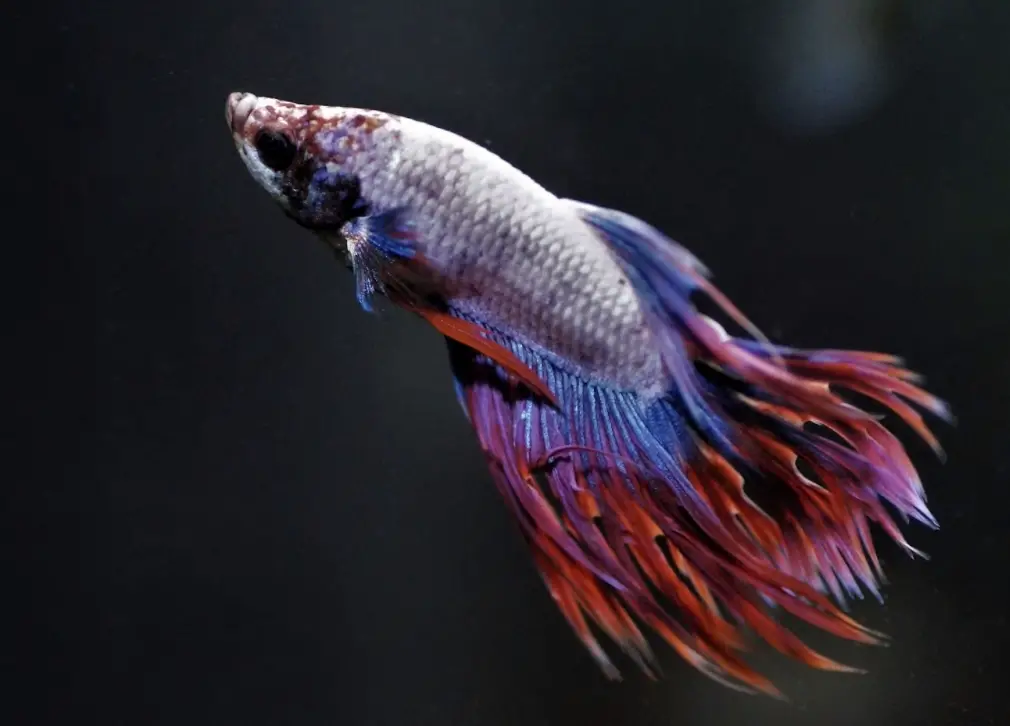
Compatibility Of Bettas With Other Fish
Bettas can get along with some other fish, but some combinations are not recommended.
When deciding on a suitable tank mate for your betta, there are several things to consider. The most important factor is the tank size – if it’s too small, two aggressive bettas may fight each other. Also, you need to find out what type of water conditions the new fish needs – does it require warm or cold water? Make sure you research this before adding any new fish to your tank.
In addition, you must pay attention to the temperament of both species. Bettas are territorial and like having their own space; they don’t do well with aggressive or fast-moving fish like tiger barbs or danios.
On the other hand, peaceful bottom-dwellers such as Cory Catfish and Otocinclus Catfish make good companions for your betta because they won’t compete with them for food or territory.
When choosing a suitable tank mate for your betta, remember that small tanks are not conducive to multiple species living together harmoniously. Researching different species’ various temperaments and water requirements is essential to create an appropriate environment where all inhabitants can thrive.
Size Considerations
When selecting tank mates for bettas, size should be a major consideration. Tank mates should not be substantially bigger than the betta, as this can cause problems in terms of competition for food and territory. Also, tank mates that are too small may end up as an accidental meal for the betta!
Researching and selecting species that will remain small enough to coexist with the betta is important. Look for fish that reach a maximum size of two inches or less. This includes species such as neon tetras and corydoras catfish. These types of fish tend to get along well with bettas and can provide a variety of colors and shapes to enhance the appearance of the aquarium.
When considering larger fish, it’s best to stick with peaceful species such as angelfish or gouramis. These fish are large enough to avoid becoming an accidental snack but typically won’t bother the betta either. As long as there is plenty of hiding places in the tank, these larger fish should not present any issues when kept with a betta.
It’s important to remember that while there are several potential tank mates for bettas, compatibility can vary greatly between individual fish, so care should be taken when introducing new tank mates into an established aquarium environment.
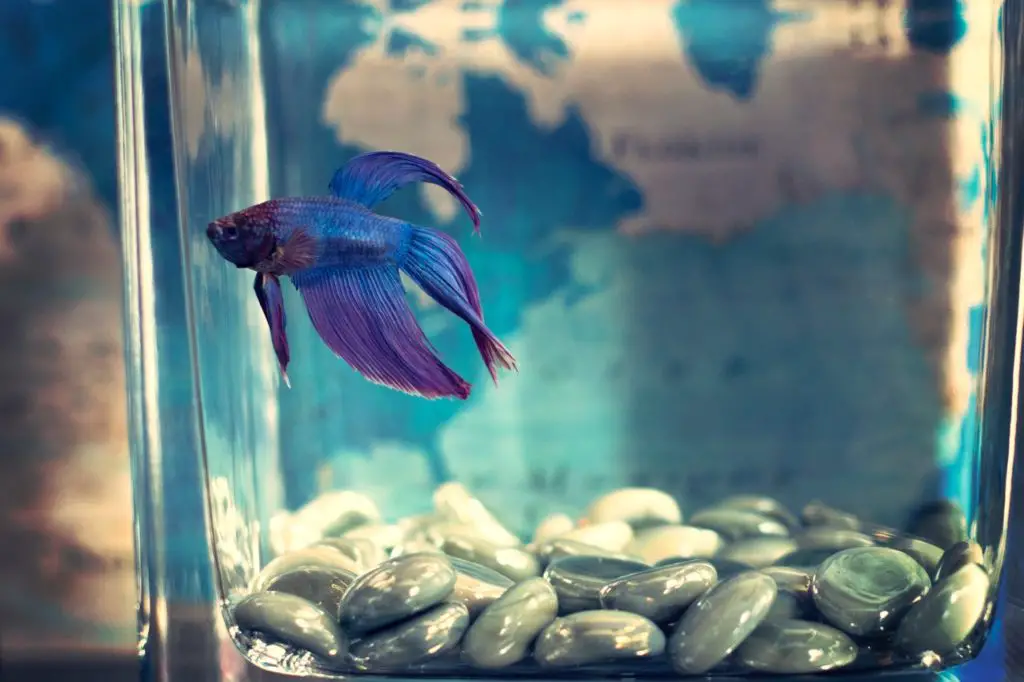
Different Types Of Tank Mates For Bettas
Once the size considerations are considered, it is important to determine which types of fish are suitable as tank mates for bettas. Many species of fish can safely co-exist with a betta. The key is to choose tank mates that have similar water requirements and that won’t be aggressive toward the betta.
For example, peaceful fish like White Cloud Mountain Minnows, Neon Tetras, Otocinclus Catfish, and Corydoras Catfish make good choices for tank mates since they won’t compete with the betta for food or territory. These fish also tend to stay on the bottom of the aquarium, giving the betta plenty of space to swim around.
Alternatively, if you’re looking for something more interesting in your aquarium, shrimp or snails also make great tank mates! Shrimp like Cherry Red Shrimp or Amano Shrimp will help keep your tank clean, while snails like Malaysian Trumpet Snails or Nerite Snails can help keep algae growth under control. They add an interesting dynamic to your aquarium without being too invasive or aggressive toward other inhabitants.
All in all, when selecting tank mates for bettas, there are many things to consider, such as size and temperament. With careful consideration and research, you will find the perfect companions to live happily alongside your betta!
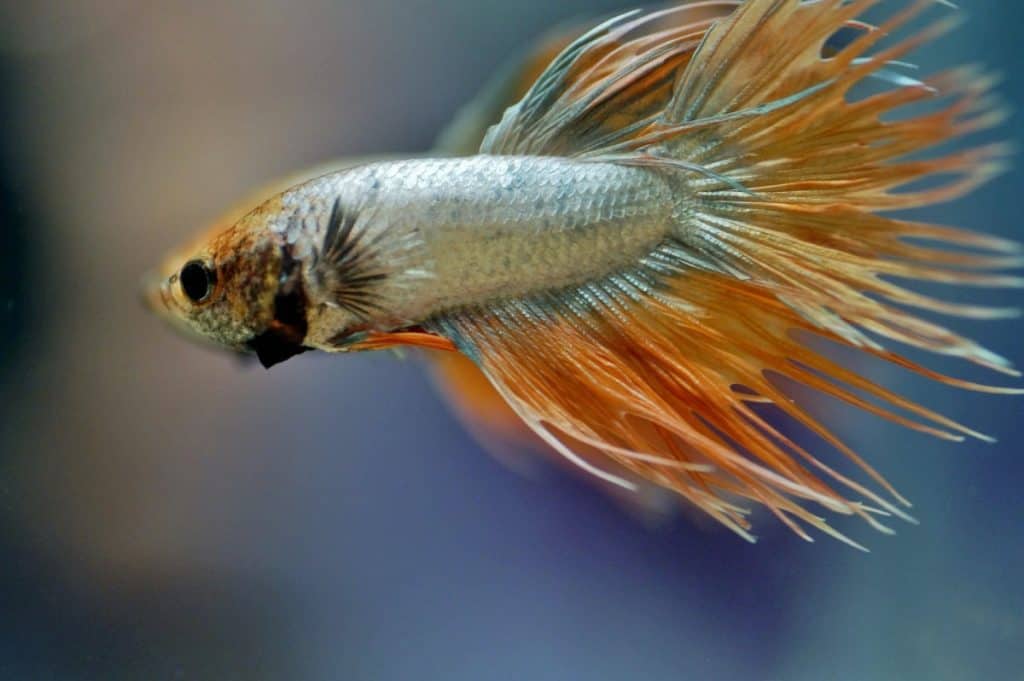
Choosing Complementary Colours
When choosing tank mates for a betta, it’s important to consider their colors. Choose fish with complementary colors to create a visually appealing aquarium. For example, opt for lighter-colored fish like white or yellow guppies if you have a deep blue betta. Alternatively, if your betta is gold, choose fish in shades of purple or red for contrast. It’s also important to avoid two similarly colored bettas in the same tank since they could become aggressive toward each other.
The next step is to consider the size of the tankmates you want to add. Bettas are territorial fish and need plenty of space, so smaller fish are best suited as companions. Add some White Cloud Mountain minnows or neon tetras – small but colorful schooling fish that can live happily alongside your betta without competing for food or territory.
Once you’ve chosen your tankmates and added them into the aquarium, keep an eye out for any signs of aggression between them and the betta, like chasing or fin nipping, and be sure to remove any overly-aggressive fish from the tank if necessary. This will help keep all occupants safe and ensure everyone remains happy and healthy in their new home!
Creating A Balanced Ecosystem
Tank mates can be an important part of creating a balanced ecosystem when it comes to keeping bettas. While bettas are very peaceful and docile fish, it’s important to ensure their tank mates don’t have aggressive or overly active behavior. This will ensure that the betta is comfortable in its environment and that stress levels are low.
The best tank mates for bettas include non-aggressive species such as Cory Catfish, Otocinclus Catfish, and Ghost Shrimp. These fish and shrimp are peaceful companions who won’t stress out your betta, yet they provide plenty of activity to keep the tank lively. It’s also important to choose fish requiring similar water conditions as bettas.
When selecting your tank mates, ensure all the fish work well in size and temperament. Avoid mixing aggressive species with your betta or other passive species in the same aquarium. In addition, research each fish you plan on introducing into your tank to make sure they are compatible with one another. They will not face any problems living together in harmony.
By taking these steps, you can create a balanced ecosystem where all the inhabitants can peacefully coexist in their habitat. With the right combination of fish and proper care, you can enjoy watching them swim gracefully around your aquarium for years.
Bottom Dwellers For Your Betta Tank
When creating a balanced ecosystem for your betta, it’s important to consider bottom dwellers. Bottom-dwelling fish can help keep the tank clean and provide a healthy environment for your betta. Here are some of the best bottom dwellers to consider for a betta tank.
One of the most popular bottom dwellers for a betta tank is Corydoras catfish. These small, peaceful fish can help clean up debris from the substrate and supplement your betta’s diet with scavenged food. They are also very active and entertaining as they explore the aquarium floor.
Loaches are another bottom-feeder type that works well in a betta tank. Unlike Corys, loaches tend to be more social and active, often traveling in groups or schooling with other fish species. They also help keep algae growth in check, making them an ideal choice if you’re looking for something that can help maintain a healthy aquarium environment.
Snails are perhaps the best option for adding bottom dwellers to your betta tank. Not only do they eat uneaten food and help keep the substrate clean, but they also add natural beauty and color to your aquarium. Apple snails and Malaysian trumpet snails are excellent choices for any betta tank setup, as both species are easy to care for and relatively hardy compared to other snail varieties.
Recommended Species For A Community Tank
When considering tank mates for bettas, choosing species that can coexist peacefully is important. Generally, peaceful and small-sized fish are the best choices for a community tank with bettas. Remember that bettas may be territorial and aggressive to other male or brightly-colored fish.
Good options include small tetras such as neon, harlequin rasboras, and white cloud mountain minnows. Other schooling fish like danios, platies, and corydoras catfish can also work well with bettas. Additionally, many bottom-dwelling species, such as snails, shrimp, and dwarf frogs, are compatible with bettas.
The key is to provide plenty of hiding spaces, so the other fish have places to escape from any potential aggression from the betta. It’s also advisable to keep one male betta per tank; if more than one is present, they may fight each other. With careful selection of compatible tank mates and adequate space for all species to thrive, a peaceful community tank with a betta can be achieved.
Avoid Aggressive Fish Species
When setting up a community tank for bettas, avoiding aggressive fish species is best. Although bettas have been known to be territorial, they should not have to compete with overly aggressive species for food or territory. While some fish will work well with them, certain types of fish should be avoided.
Larger and more aggressive fish, such as cichlids, can be easily intimidated by Bettas. Cichlids require specific water parameters and tend to become territorial when they feel threatened or crowded. They may also consume the same foods as your betta, leaving them without enough food or energy to survive. It’s best to avoid these types of fish if you want a peaceful tank environment.
Overall, it’s important to research before choosing any fish for your tank setup – especially if you plan on adding a betta! Understanding each species’ size, temperament, and dietary needs is essential to create a balanced and harmonious environment within the tank.
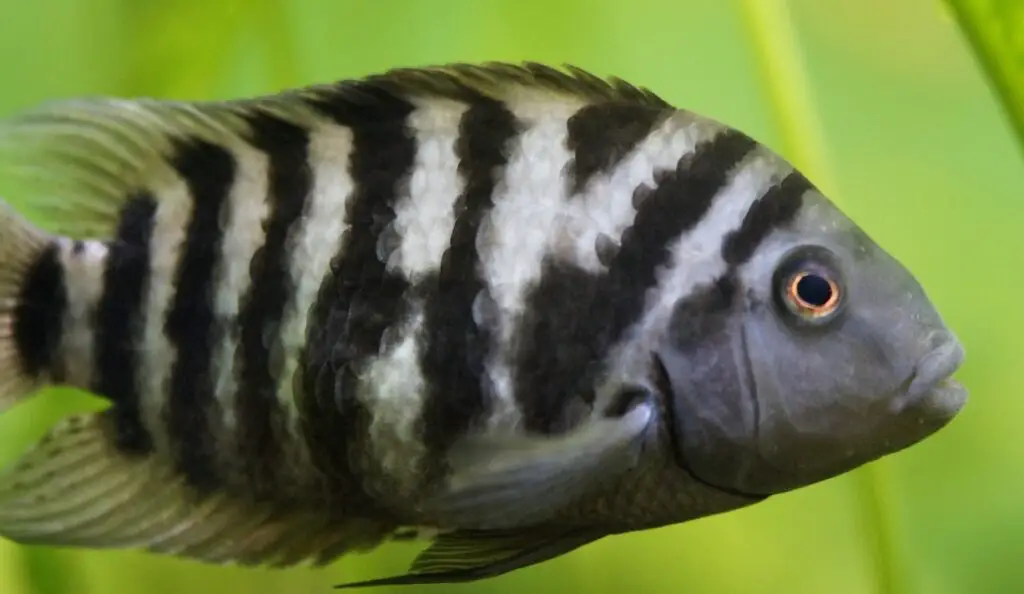
Proper Acclimation Process
Acclimating your new fish to their tank is important for a successful transition. It’s best to start by floating the bag in the tank for 15 minutes so that the temperature of the water can match up. Afterward, you can remove a cup of water from the tank and slowly add it to the bag for over 15 minutes. This helps reduce any sudden shock caused by differences in pH, ammonia levels, or other conditions. Once you’ve done this a few times, you can move on to transferring the fish into its new home. You should do this carefully, as stress could cause injury or death. The best way to do this is with a net – scoop up the fish and put it into its new tank.
It’s important to keep an eye on your betta when adding new tank mates – they are territorial creatures and can become aggressive if they feel threatened. If possible, introduce multiple fish at once so they are not overwhelmed by feeling isolated. Even though many species get along well with bettas, such as tetras or corydoras catfish, some may not be suitable for your particular setup due to size or behavior issues. Make sure to research each type before introducing them together!
Once your new additions have settled in comfortably, regular water changes should be performed every week or two to keep their environment clean and healthy. Monitor things like pH and nitrogen levels so that any sudden changes don’t harm your fish; if done properly, they should live long and happy lives in their new home!
Monitoring The Health Of Tank Mates
Once you’ve chosen tank mates for your betta, keeping an eye on their health is important. Look out for changes in their behavior, such as socializing more or less than usual. Make sure they’re eating normally and that their fins look healthy. If you notice any changes in the fish’s behavior or appearance, take them out of the tank and inspect them closely.
If the fish displays signs of disease or distress, quarantine them immediately. This will help prevent the spread of illness to your other tank mates. You should also be looking for parasites, which can affect your betta and its tank mates. Check the water parameters like ammonia and nitrate levels regularly to ensure they are within a safe range for all your fish.
Finally, always make sure that there is enough food for all of your fish. Overfeeding one species can cause stress on the others as well as cause blooms in algae and other unwanted organisms in your aquarium environment. Provide a variety of foods, so everyone gets a balanced diet, and watch out for any signs that one type of food may be causing problems with any of your fish.
Frequently Asked Questions
How Often Should I Change The Water In My Betta Tank?
When caring for a betta fish, one of the most important factors is changing the water in its tank. Maintaining good water quality and regularly cleaning the tank is essential to ensure your betta’s health and well-being. So, how often should you change the water in your betta tank?
The answer depends on several factors, such as the size of the tank, the number of fish, and what type of filtration system you have set up. Generally speaking, if you have a smaller tank with just one or two fish, doing a partial water change (25-50%) every week or two is best. If you have a larger tank with more fish and an efficient filtration system, then changing 25% of the water once a month should suffice. Additionally, an aquarium vacuum cleaner can help keep your tank clean and reduce the water needed for regular changes.
It’s also important to remember that bettas are very sensitive creatures and require careful monitoring of their environment. To ensure your betta stays healthy and happy, check their water conditions regularly using a test kit and monitor any changes in pH levels or nitrate concentrations throughout each cycle of water changes. If you notice any unusual behavior from your betta or see signs of illness such as lethargy or lack of appetite, it’s time to do another partial change immediately.
In summary, how often you need to change your betta’s water will depend on several factors, including the size and number of fish in the tank and your filtration system setup. You should aim for partial changes every week or two if you have a smaller tank with only one or two fish, but if you have a larger setup with more fish, then monthly changes should be enough. Finally, use test kits regularly to monitor pH levels and nitrate concentrations so that necessary adjustments can be made promptly for optimal health and happiness for your pet betta!
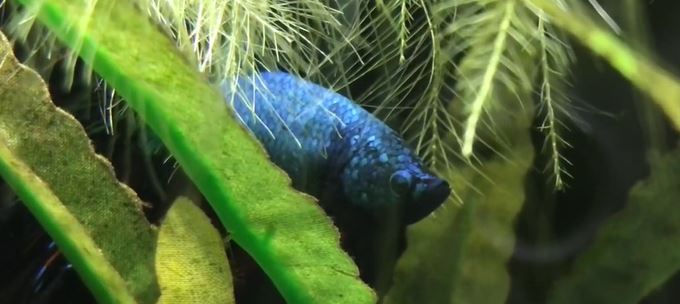
What Is The Optimal Water Temperature For A Betta Tank?
When keeping a betta in a tank, water temperature is one of the most important aspects to consider. Optimally, bettas should be kept in water that is between 78°F and 80°F (25°C to 27°C). Keeping the temperature within this range is important so your betta can live comfortably and remain healthy.
An aquarium heater is one way to ensure that your tank has the right temperature for your betta. An aquarium heater will keep the water at a steady temperature and allow you to adjust it depending on the season or other environmental factors. Additionally, you may want to add an aquarium thermometer so you can easily monitor the temperature of your tank at all times.
It’s also important to note that if your room temperature drops below 78°F (25°C) during winter, you’ll need to use an aquarium heater even more consistently and consider adding additional insulation around the sides of your tank or investing in a larger aquarium heater. The goal is always to ensure that your betta has access to warm water temperatures throughout all seasons and any environmental changes.
When keeping a betta in an aquarium, paying attention to water temperature is essential for their health and comfort. Keeping the tank’s temperature between 78°F and 80°F (25°C and 27°C) with an aquarium heater helps ensure that your betta gets what they need and remains healthy throughout its life.
Is It Necessary To Use A Filter In A Betta Tank?
When setting up and maintaining a betta tank, one of the most common questions asked is whether or not it’s necessary to use a filter. The answer depends on several factors, including the size of the tank, the number of fish in it, and the type of filtration system used.
Having a filter in a betta tank can help keep the water clean and provide oxygen to your fish. However, there are some drawbacks that you should consider as well. One potential downside is that filters can create too much current for bettas, which can stress them out and cause health problems. Furthermore, using a filter often requires more maintenance than without one.
If you want to set up a betta tank without a filter, you’ll need to do weekly water changes and use an aquarium vacuum to clean the substrate and remove debris from the bottom of the tank. This will help keep ammonia levels low and provide sufficient oxygenation for your fish. Additionally, adding live plants to your tank will help with oxygenation and can act as natural filters by absorbing toxins from the water.
In summary, while having a filter in a betta tank can be beneficial, it’s not essential if you take proper care of your tank. Regular maintenance, such as water changes and vacuuming, should be enough to keep your fish healthy and happy in their environment.
How Many Fish Can I Safely Keep In A Betta Tank?
The answer is not as straightforward as one might think when it comes to how many fish can be safely kept in a betta tank. It depends on several factors, such as the size of the tank, the type and size of fish that are added, and the temperament of the betta—generally speaking. However, it’s best to err on caution and keep only a few small fish in a betta tank.
The first factor to consider when determining how many fish can be kept in a betta tank is the size of the tank. If it’s too small for more than one or two fish, then it’s not suitable for housing multiple species. On top of that, smaller tanks tend to have less oxygen and fewer beneficial bacteria that help break down waste. So while you may be able to fit a few more fish in a smaller tank than recommended, it could lead to an unhealthy environment for them all.
The second factor is the type and size of any additional fish. It’s important that they are compatible with your betta; this means avoiding any aggressive or territorial species like cichlids or goldfish. Smaller peaceful schooling species like danios and rasboras are usually good candidates for being tank mates with bettas. And if you decide to add more than one species, ensure they require similar water parameters and conditions so they don’t compete for resources or fight among themselves.
Ultimately, it’s up to you as an aquarist to decide how many fish you feel comfortable keeping in your betta tank. But remember: fewer is always better for maintaining optimal water quality and ensuring happy, healthy inhabitants!
What Is The Best Way To Feed My Tank Mates?
When feeding tank mates for bettas, there is no one-size-fits-all answer. Fish have different dietary needs and preferences, so it’s important to research before adding any fish to a betta tank. The best way to feed your tank mates is to provide them with various foods that meet their nutritional requirements.
Many types of food are available for aquarium fish, and the ones you choose should be tailored to the specific needs of your tank mates. For example, if you’re keeping a species of bottom-feeding fish in the tank, such as loaches or corydoras, it’s important to provide them with sinking pellets or algae wafers. On the other hand, floating flakes may be more suitable if you’re keeping fast-swimming species such as tetras or danios. Live foods such as brine shrimp can also be offered occasionally as an extra treat.
To ensure that all the fish in your tank get enough food, monitoring how much they eat and spreading their meals throughout the day is important. This helps prevent overfeeding, leading to an unhealthy build-up of nitrates in the water. Some people find it beneficial to use a timer for automatic feedings to keep the aquarium inhabitants on a regular schedule. Doing this can help ensure everyone in the tank receives their fair share of food!
No matter what type of food you decide on for your tank mates, always remember that providing them with high-quality nutrition is essential for maintaining their health and well-being. Regularly checking water parameters and paying attention to how much they eat will help keep your betta tank happy and thriving!
Conclusion
As you can see, there are many things to consider when setting up a tank for your betta. You need to ensure that the water temperature and chemistry are suitable for these fish and decide whether a filter is necessary. Additionally, it’s important to know how many other fish you can safely keep with your betta.
Now that we have gone over all the basics let’s look at some of the best tank mates for your betta. These include tetras, white cloud mountain minnows, mollies, ghost shrimp, Corydoras catfish, apple snails, and African dwarf frogs. These species will do well in similar water conditions as your betta and should help ensure a healthy and happy community tank.
Finally, remember to feed all the inhabitants of your aquarium appropriately and monitor water parameters regularly to ensure healthy living conditions for all species. You can create an ideal environment for yourself and your new tank mates with proper maintenance and care!


